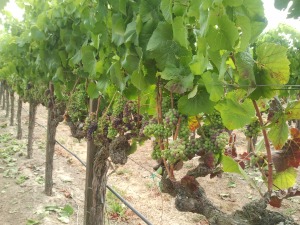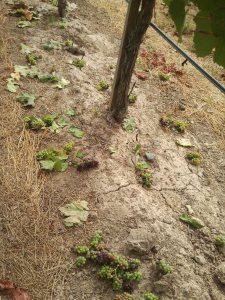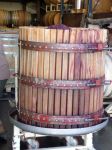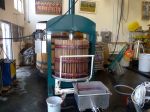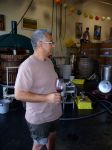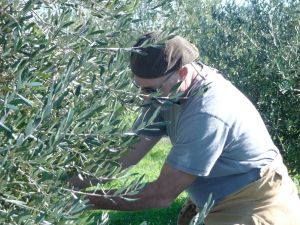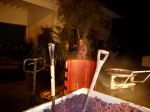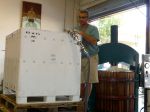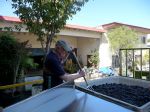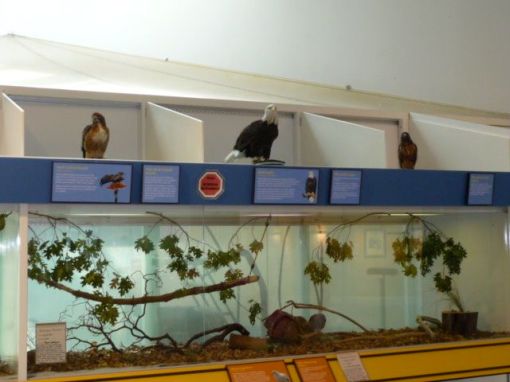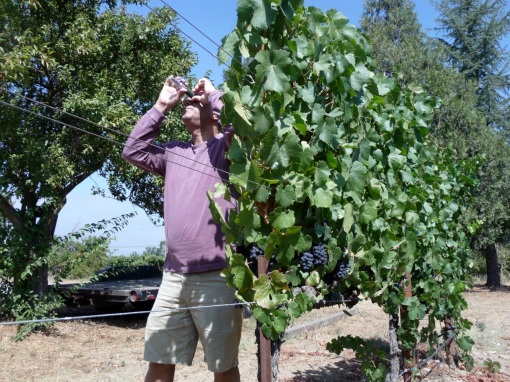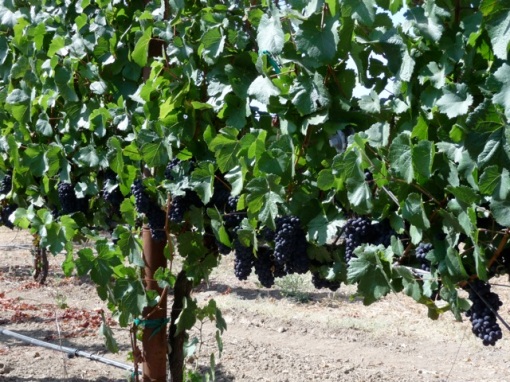I write this awaiting arrival of 5 tons of Pinot Noir from Beresini Vineyard in Carneros. Uzi woke at 3:50 this morning to oversee the pick while I slept to a more normal hour and drove to meet him and the fruit at the winery. I beat them both here so am taking advantage of the moment to write this in our traveling office/dining room/sometimes bedroom (aka my car.)
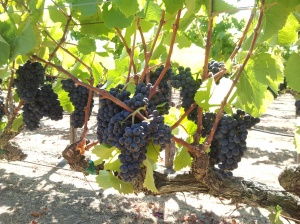 The reason he and the fruit are a bit late, and why growers and winemakers across Sonoma and Napa are celebrating, is that the perfect fruit set we had this spring and a steady stream of pleasant weather has led to an incredibly bountiful harvest. The vineyard produced more fruit than it has in years and they needed more time and more bins to pick it. The yield (tons/acre) is still low compared to most vinearyds, but for Beresini Vineyard this year is a jack pot! I think we’ll finally get as much as we asked for. And best of all, this year’s decisions on when to pick are being decided on ripeness not impending rain storms or heat spikes that played a role in the last 2 vintages.
The reason he and the fruit are a bit late, and why growers and winemakers across Sonoma and Napa are celebrating, is that the perfect fruit set we had this spring and a steady stream of pleasant weather has led to an incredibly bountiful harvest. The vineyard produced more fruit than it has in years and they needed more time and more bins to pick it. The yield (tons/acre) is still low compared to most vinearyds, but for Beresini Vineyard this year is a jack pot! I think we’ll finally get as much as we asked for. And best of all, this year’s decisions on when to pick are being decided on ripeness not impending rain storms or heat spikes that played a role in the last 2 vintages.
We are so happy to bring in Pinot Noir from Beresini and Lauterbach Vineyards for the 4th year in a row and Chardonnay from Hyde Vineyard for the 2nd. We just bottled our 2011s from each of these 3 vineyards and consider ourselves very lucky to have ongoing relationships with these dedicated growers.
And now it’s time for us to roll up our sleeves, get sticky and dirty, keep our traveling office stocked and go make some wine. Hope your fall is just as happy and exciting!
